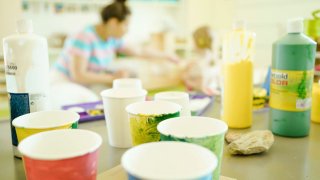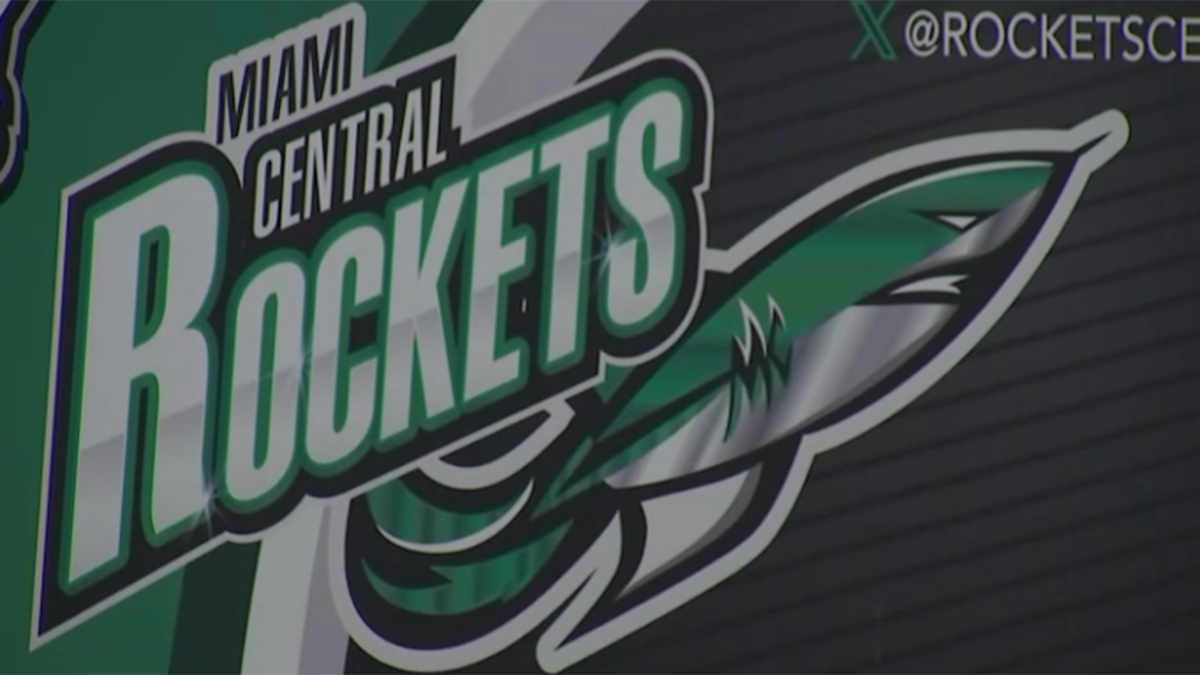
Arasay Peñate didn’t know what autism spectrum disorder was when she arrived in Little Havana from Cuba three years ago with her young son, who had trouble saying the word “mamá.”
But since her son, now-4-year-old David Silva Jr. , was diagnosed with the condition, her plans of coming to Miami to study and get a good job became secondary to her son’s care.
In March, when the coronavirus pandemic forced her son’s child care at Easterseals South Florida to close down, Peñate froze when she realized she faced an impossible choice.
The couple’s calculation at the time was simple: Her husband, David Silva, was still working at two high-end restaurant jobs that seemed stable and could cover most of their expenses. She was a cashier at Fresco y Más making $9.50 an hour, working less than 40 hours a week. Neither has family close by whom they trusted to care for their son while they were at work.
The Hurricane season is on. Our meteorologists are ready. Sign up for the NBC 6 Weather newsletter to get the latest forecast in your inbox.
If one of them had to choose to leave their job and stay at home, it would have to be her.
But two months later, caring for their son on their own has come at a steep cost. Peñate and Silva are both out of jobs, having spent their only income — the federal stimulus check — on rent for their Little Havana apartment and other urgent expenses. Neither their unemployment nor their food stamps applications have been processed by the state of Florida, the same burden felt by hundreds of thousands of Florida’s newly unemployed.
While Florida’s essential child-care providers say they have been put under incredible strains during the pandemic with little support, child-care experts are warning that reopening too fast without a clear plan for the industry could result in thousands of families, including essential workers, having to choose between caring for their children or making ends meet.
Local
The concerns are even more acute for families who have children with special needs, whose brain development during the early years is critical. Missing out on weeks of therapy during the pandemic could have long-lasting effects on the child’s ability to progress.
“I don’t see anyone talking about mothers. I don’t see anyone talking about children, and on top of those children, the kids who have special conditions,” Peñate said. “That little push is necessary, and that push comes from government, from high-level officials. It shouldn’t depend on us who are at the bottom of the ladder, but rather on those at the top.”
A ‘DECIMATED’ INDUSTRY
When public schools began to close in early March, Gov. Ron DeSantis urged child-care centers to stay open for parents who had to continue working, including essential workers like Peñate. Despite guidelines from the Centers for Disease Control & Prevention, most child-care providers opted to close due to a dramatic drop in demand and fears of COVID-19 spread. At one point, fewer than 200 child-care centers in South Florida were still open, leaving families to scramble.
On the eve of South Florida’s reopening, about 523 centers are open, or nearly 40% of the 1,343 child-care centers in Miami-Dade and Monroe counties that contract with the Early Learning Coalition, a nonprofit that works with daycare centers and early childhood programs in the two counties.
But the picture is even bleaker for those centers that care for children with special needs. While there were over 200 Early Learning Coalition-affiliated centers available for children with disabilities before the pandemic in the two South Florida counties, only 31 of those that are open are serving children with special needs.
“We’re concerned that the number of providers that are going to be able to help children with special needs … is going to drop significantly,” said ELC president and CEO Evelio Torres, who testified before DeSantis’ Re-open Florida Task Force. “It’s not going to be market-driven. It needs to be driven, I think in large part, by the government providing incentives.”
There have been some financial incentives for Florida centers who take in children of first responders. But providers argue that the governor’s decision to shift the responsibility onto childcare centers with little cooperation among state agencies is partly to blame for the industry’s inability to bounce back.
“I do not think the industry is prepared for those (reopening) actions. I think the financial damage that’s been done to the industry, ... I would say it’s not a stretch to use the word decimated at this point,” said Scott Cotter, CEO of Big Blue Academy, which runs private childcare centers in several states, including one in Broward County.
Cotter said his centers have taken all the recommended actions, like keeping classroom sizes to fewer than 10 children per teacher, keeping children in the same classroom with the same people every day and screening children for fever and other COVID-19-related symptoms.
But the measures have taken a toll. Of 35 employees, the Broward center is now run by a staff of nine. Due to the new classroom ratios, only about 35 children are showing up every day, rather than the regular attendance of 170 to 190 kids under the age of 4.
“So those classrooms are being substantially reduced in terms of the overall number. Even if centers go back online and reopen, their capacities are going to be substantially reduced under these guidelines. That’s going to create a supply shortage in and of itself,” Cotter said.
WHO’S GOING TO PAY FOR IT?
Among the financial assistance programs available to child-care centers are $3.5 billion in block grants to states that were made available through the emergency CARES Act. But Cotter argued the urgently needed funds will take a while to reach providers, as states decide how they will be spent.
That figure falls short of the aid that some child-care advocates have estimated will be needed to support child-care providers through the coronavirus pandemic. Industry leaders, including the National Association for the Education of Young Children, say it will take $50 billion to make up the losses.
“It’s just not fair to leave child care to its own devices in a public health pandemic,” said Rihan Allvin, CEO of the NAEYC, the national nonprofit that advocates for child-care providers and families of young children. “They need guidance; they need coordination.”
Lynette Fraga, executive director of the nonprofit resource company Child Care Aware of America, said there’s a concern from providers on whether families will be able to afford the child-care centers that remain open, especially as the number of centers that serve children with special needs are expected to decline.
“There is a gap there and that means somebody’s got to bear the burden of that gap,” Fraga said.
REGAINING FAMILIES’ TRUST
Meanwhile, Torres warned the ELC is still worried about having enough personal protective equipment for the centers that remain open, which has been a struggle to secure with little support from state authorities. While he said none of the South Florida child-care centers they contract with have had to close over a COVID-19 infection, he said the nonprofit coalition is not tracking cases.
“They may have family members who may have tested positive, considering how many cases we have in Miami-Dade, but we have not heard of any children or adults in the program. The reason we haven’t heard it is because we’re not tracking it,” Torres said.
Florida’s Department of Children and Families said in an email to the Herald that it had not received any requests from licensed child-care centers for PPE as of earlier this month. Meanwhile, DCF spokeswoman DaMonica Smith said staff continues to evaluate best industry practices across the country.
DCF is also only requiring the agency to conduct in-person visits at centers during renewal inspections and has continued doing routine inspections over the phone and via other virtual technology, Smith said.
Smith did not say whether there have been reported positive cases of COVID-19 stemming from child-care centers in Florida and deferred questions to state health authorities.
When asked if the agency is tracking cases stemming from child-care centers in the state, Smith said they are working with local agencies and partners to “coordinate anytime there is a notification involving a symptomatic child or staff member at a provider,” said Smith. “However, the Florida Department of Health has the lead in tracking COVID-19 in Florida.”
Parents like Peñate are still doubtful about whether they can trust sending their children back to daycare as states reopen. Because her son has autism, Peñate doesn’t always know if he is sick until it’s too late because he cannot verbalize it.
“I started thinking that I work at a place with a lot of traffic. If it was just me, I’d stick it out to the end. But since I have a child, and he has his condition, that has me afraid,” Peñate said. “His primary doctor closed. If he gets sick, I have to run to the emergency room. That’s something that weighs on my mind and in my heart.”
David is a sweet kid who likes the sound of trains as they zoom through a crossing. He has a hard time sitting still but over time, therapists have helped him to communicate and say at least a handful of words. Providers at his school said they worked with families to make arrangements with therapists still willing to make home visits.
“A typical community-based daycare does not have the resources to care for children with special needs,” said Easterseals president and CEO Loreen Chant. “There are really no options.”
Luckily, David’s therapist still sees him five days a week for his daily therapies.
It’s not lost on Peñate the disproportionate care-taking responsibilities women are being forced to carry throughout the pandemic. In fact, according to the NAEYC, of the approximately 2 million child-care workers who have been affected by cuts and furloughs, an overwhelming majority are women.
“On the one hand, my whole world was shattered,” Peñate said. ”On the other hand, it’s taught me to be stronger, to view things from another perspective, to see and put myself in his shoes, and see things the way he sees them.”



